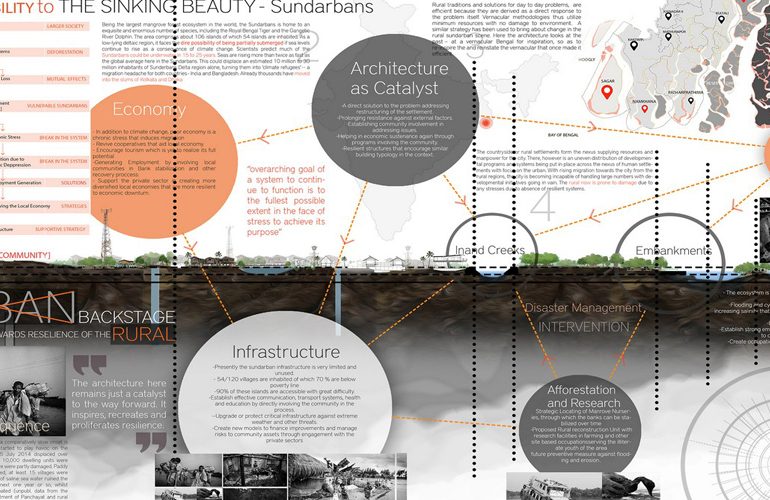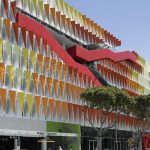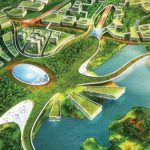The Need: Forming the core, Global Cities are the material manifestations of a structural process of Globalisation operating largely behind people’s backs to transform the economic functions, class composition, urban landscapes, and cultural patterns of cities. The cities which used to run without a hassle are burdened beyond their capacities with excess influx of both people and resources, prone to eminent breakdown. The most affected diaspora are the urban poor, who, as a result of mass migration, are from rural areas. This Project aims at concentrating on the development of unnoticed rural communities which are highly vulnerable to numerous calamities. The ability of a settlement to thrive as centres of human habitation, production and cultural development, despite the challenges posed by climate change, population growth and globalisation, is determined by their resilience. Thus, it is of paramount importance to create a model of highly resilient, sustainable design, focusing on such vulnerable Rural Communities and the resources with a deeper insight to lessen the rate of migration and reduce the need for excess treatments in cities.
Third Award | RTFSA 2016 Awards
Category: Urban Design (Concept)
Participant Name: Siddarth PT
Country: India
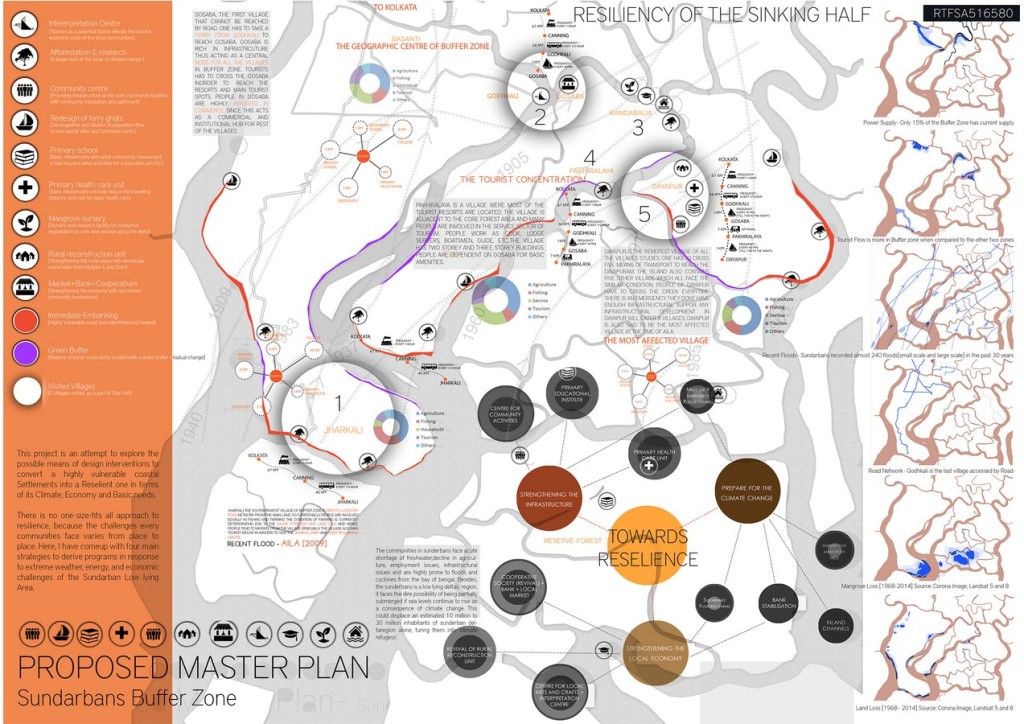
The Sinking Beauty – Sundarbans, West Bengal : The SITE
Being the largest mangrove forest ecosystem in the world, the Sundarbans is home to an exquisite and enormous number of species, including the Royal Bengal Tiger and the Gangetic River Dolphin covers an area of 9630 sq. kms and is designated as a Biosphere Reserve comprising about 106 islands of which 54 islands are inhabited. Scientists predict much of the Sundarbans could be underwater in 15 to 25 years. Seas are rising more than twice as fast as the global average here in the Sundarbans. This could displace an estimated 5 million inhabitants of Sunderbans, turning them into ‘climate refugees’ — a migration headache for both countries – India and Bangladesh- thousands have already moved into the slums of Kolkata and Dhaka.
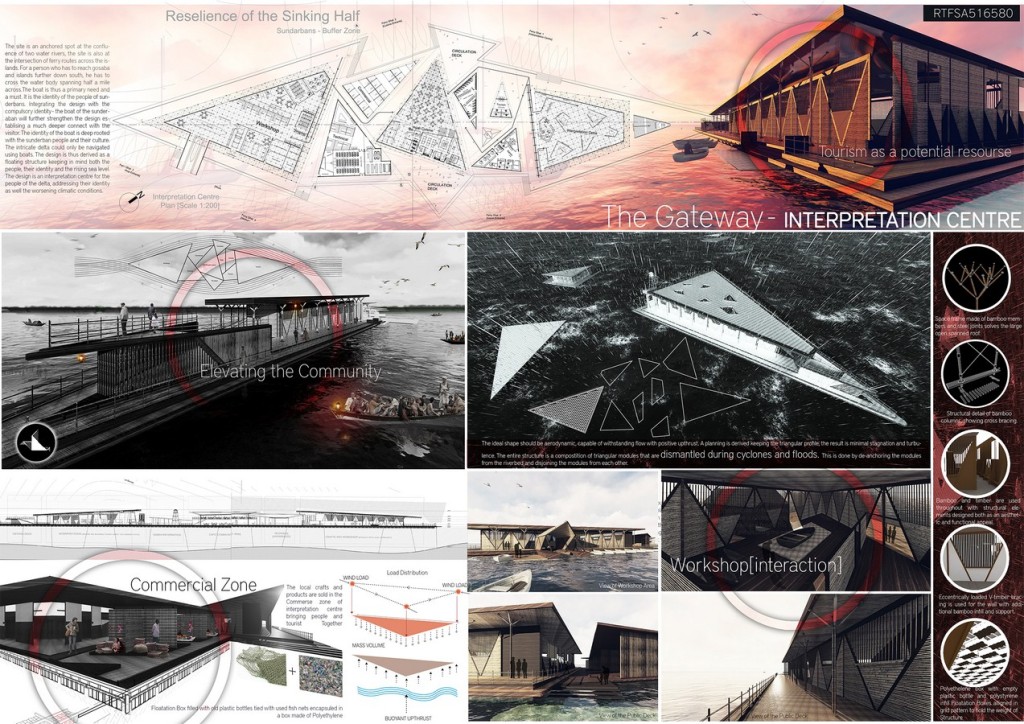
Resilience of the Sinking Half
There is no one-size-fits all approaches to resilience, because the challenges every communities face varies from place to place. I have come up with a set of strategies to propose a master plan, with an intense study and analysis, to the Buffer zone of Sundarbans in response to extreme weather, energy, infrastructural needs and economic challenges. The Strategies are,
Strengthen the Local Economy : The Root cause for people migrating out of Sundarbans is that they don’t have a regular source of income. Programs and Systems are established in a way that it generates employment to the local community, making them more resilient to economic downturn.

Strengthen the Infrastructure : A larger sector of population do not have access to Basic Infrastructural amenities. Community activities, knowledge development and health issues do not have enough infrastructural support to withstand the social diversity. Basic Infrastructure is proposed after an intense mapping, as per the need and designed to optimise performance of various functions through more efficient operations.

Prepare for the Climate Change : Looking at the natural calamities and late future, there is dire possibility of Sundarbans being partially submerged into the Ocean in 30 years. 5 million people are facing the threat of being displaced or migrated as a consequence of this climate change. Solutions are derived to adopt and implement preparedness that protect vulnerable population and natural resources.
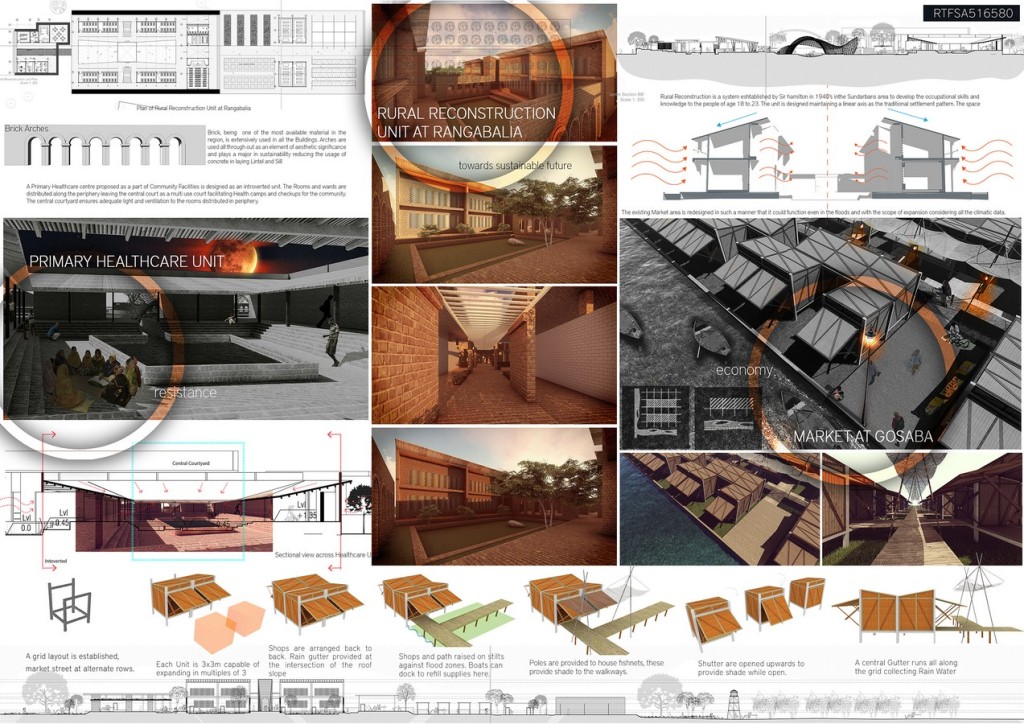
Tourism as a Potential Tool: Tourism, a major component in Sundarbans, is efficiently used to promote the identity and livelihood of local communities forecasting their lives.
If you’ve missed participating in this award, don’t worry. RTF’s next series of Awards for Excellence in Architecture & Design – is open for Registration.
Click Here

